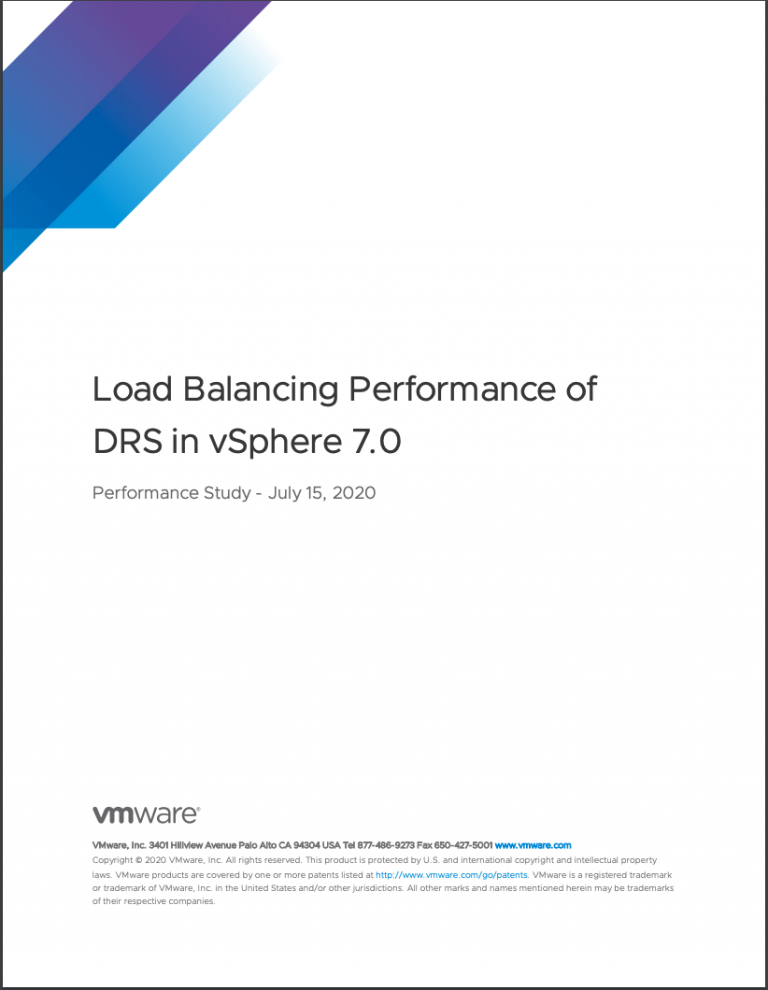Another new feature of vSphere 4.1 is the DRS-Fault Tolerance integration. vSphere 4.1 allows DRS not only to perform initial placement of the Fault Tolerance (FT) virtual machines, but also migrate the primary and secondary virtual machine during DRS load balancing operations. In vSphere 4.0 DRS is disabled on the FT primary and secondary virtual machines. When FT is enabled on a virtual machine in 4.0, the existing virtual machine becomes the primary virtual machine and is powered-on onto its registered host, the newly spawned virtual machine, called the secondary virtual machine is automatically placed on another host. DRS will refrain from generating load balancing recommendations for both virtual machines.
The new DRS integration removes both the initial placement- and the load-balancing limitation. DRS is able to select the best suitable host for initial placement and generate migration recommendations for the FT virtual machines based on the current workload inside the cluster. This will result in a more load-balanced cluster which likely has positive effect on the performance of the FT virtual machines. In vSphere 4.0 an anti-affinity rule prohibited both the FT primary- and secondary virtual machine to run on the same ESX hosts based on an anti-affinity rule, vSphere 4.1 offers the possibility to create a VM-host affinity rule ensuring that the FT primary and secondary virtual machine do not run on ESX hosts in the same blade chassis if the design requires this. For more information about VM-Host affinity rules please visit this article.
Not only has the DRS-FT integration a positive impact on the performance of the FT enabled virtual machines and arguably all other VMs in the cluster but it will also reduce the impact of FT-enabled virtual machines on the virtual infrastructure. For example, DPM is now able to move the FT virtual machine to other hosts if DPM decides to place the current ESX host in standby mode, in vSphere 4.0, DPM needs to be disabled on at least two ESX host because of the DRS disable limitation which I mentioned in this article.
Because DRS is able to migrate the FT-enabled virtual machines, DRS can evacuate all the virtual machines automatically if the ESX host is placed into maintenance mode. The administrator does not need to manually select an appropriate ESX host and migrate the virtual machines to it, DRS will automatically select a suitable host to run the FT-enabled virtual machines. This reduces the need of both manual operations and creating very “exiting” operational procedures on how to deal with FT-enabled virtual machines during the maintenance window.
DRS FT integration requires having EVC enabled on the cluster. Many companies do not enable EVC on their ESX clusters based on either FUD on performance loss or arguements that they do not intend to expand their clusters with new types of hardware and creating homogenous clusters. The advantages and improvement DRS-FT integration offers on both performance and reduction of complexity in cluster design and operational procedures shed some new light on the discussion to enable EVC in a homogeneous cluster. If EVC is not enabled, vCenter will revert back to vSphere 4.0 behavior and enables the DRS disable setting on the FT virtual machines.
DRS-FT integration
1 min read


Boy, would I like to see the block diagram of DRS its decisions! These are really great improvements, and makes sure FT is more mature and usable in enterprise environments.
Frank,
Any idea why EVC needs to be enabeled for DRS-FT to work?
Always understood EVC is not much more then cpu masking for dummy’s, but this remark kind of makes me reconsider.